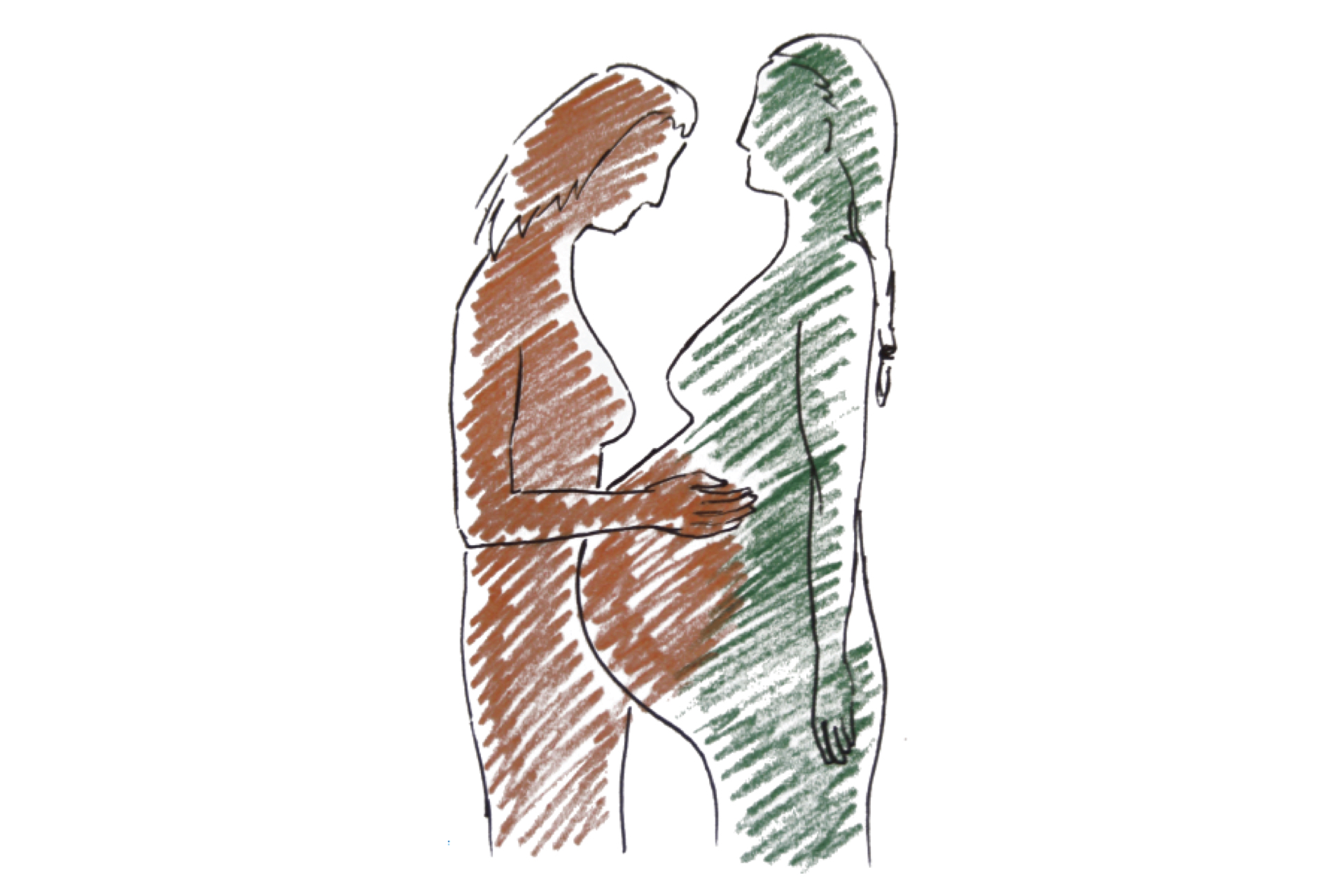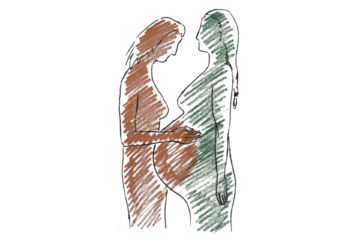Once upon a time, motherhood was certain. It was proved by giving birth. The Latin maxim 'mater semper certa est' that told us so was irrefutable. Whether or not that was ever actually true (given historically it is known that some women had babies for others), with the advent of IVF technologies that allow the transfer of genetic offspring from one woman to another, it has for a long while been biologically, as well as socially, questionable.
Surrogacy, in fact all assisted reproductive technology, is unregulated in Ireland. This proved fortuitous last week, as the complete absence of law allowed an Irish judge, Mr Justice Abbott, to find that the genetic parents of twins born using a surrogate (the mother's sister) could — and should — be named as the children's parents on their birth certificate (1). This, the judge said, was justified both in terms of the commissioning mother's genetic link to the children, as well as her intention to parent them.
When born, the surrogate registered the birth, as she was required to do, alongside the commissioning (genetic) father (who was not so required!). Subsequently, the couple asked for the birth registration to be amended because it was incorrect and reflected neither the biological nor social reality of the twins' parenthood. The Chief Registrar (An t-Ard Chlaraitheoir) found there was no way to do this, hiding behind bureaucracy and 'mater semper certa est'.
The parents applied to the High Court for a declaration that the biological mother was the mother of the child (relying on either section 35 of the Status of Children Act 1987 or the Court's inherent jurisdiction). They presented DNA evidence and a clinic's letter detailing the medical procedures that had taken place to establish the pregnancy. The application was unopposed by the surrogate mother, who was a notice party.
In opposing the change to the birth certificate, the respondent attempted to rely not only on motherhood's supposed certainty, but interestingly also on epigenetics. Expert witnesses were called to produce evidence about epigenetic changes that would have occurred to the twins while in utero, in an attempt to demonstrate that the maternal-fetal environment is as much about motherhood as 'traditional' genetics and thereby distinguishing motherhood from (genetic) fatherhood, which is (it seems) only about the DNA. Another strand of the respondent's argument was that the certainty of motherhood is uniformly accepted as legal truth across the EU, where most countries do regulate surrogacy one way or another, including by banning it outright.
Mr Justice Abbott was unconvinced by the epigenetics argument and largely unconcerned with how the rest of the EU viewed motherhood following surrogacy. On the role of epigenetics he observed that changes to the epigenome are not heritable and that though the science of both genetics and epigenetics was likely to develop in the future, 'it is most unlikely that epigenetics will ever trump the deterministic quality of chromosomal DNA' (at [98]).
On motherhood he reviewed related case law, noting that Ireland had nothing affirming the motherhood principle (indeed, much family case law prioritised the 'blood link') and that surrogacy contracts were not illegal (though unlikely to ever be enforced). On these findings, he declared that the commissioning genetic mother was the legal mother and was entitled to be recorded as such on the twins' birth certificates, alongside the genetic father.
While the decision is to be welcomed as reflecting the true nature of parenthood following surrogacy, the emphasis placed on the genetic link is slightly concerning. Though Mr Justice Abbott included the commissioning mother's intention to become the mother in his reasoning, it was as an added bonus to the main event of genetics. This leaves questions to be answered about parenthood, potentially for both intending mothers and fathers, following surrogacy where the genetic link is not present. Presumably, if the sister in this case had also donated her egg, her genetic connection combined with the gestational relationship would have led Mr Justice Abbott to determine that she was the true mother of any children born, notwithstanding all the parties' intentions. What if an egg or sperm donor external to the family was used?
That said, the decision clearly has the potential to make surrogacy a more attractive pathway to parenthood in Ireland, particularly for those who can supply their own gametes. It also comes against a background of fairly liberal and facilitative recommendations and guidelines in relation to surrogacy arrangements.
In 2005 the Commission on Assisted Human Reproduction recommended that intention should determine parenthood following surrogacy (2). And only last year the Irish Department of Justice issued guidance in relation to cross-border surrogacy arrangements, which acknowledged that a central problem was that 'biological mothers' only had recourse to adoption in order to create legal relationships with surrogate-born children (3). At least for those Irish intending mothers who also provide DNA, it seems this problem has been eradicated. It remains to be seen if intention will ever be regarded as enough to 'trump' genetics.
What is to be hoped for, is that the inroad created by one Irish judge will help open debate on parenthood following surrogacy specifically and the regulation of surrogacy more generally in the UK. The failure to properly re-address surrogacy when the opportunity arose during the 2007 review of the Human Fertilisation and Embryology Act leaves us with law on surrogacy that is not fit for purpose, particularly given the power of the Internet and the realities of cross-border arrangements, as recent cases have shown. Surely making the processes of entering surrogacy arrangements and establishing legal familial relationships at the end of them as safe as possible should be a priority.





Leave a Reply
You must be logged in to post a comment.